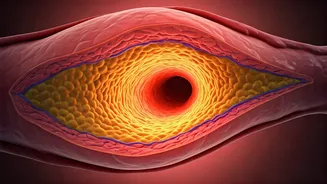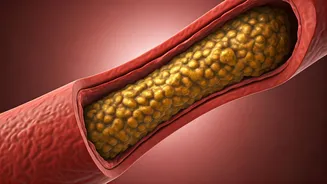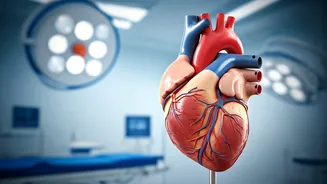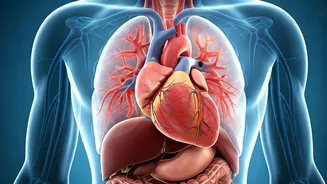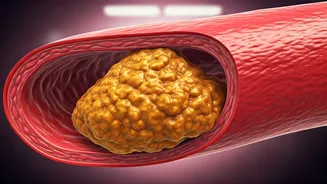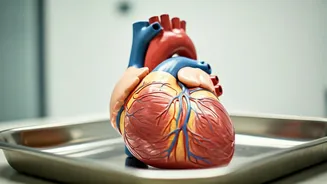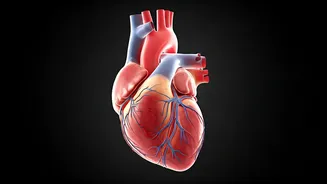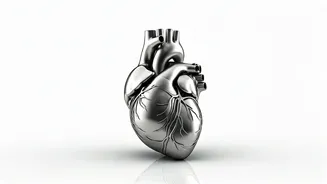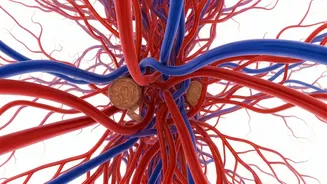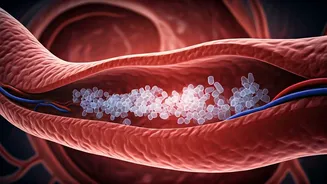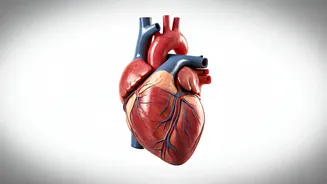Chest Pain or Discomfort
Chest pain or tightness is a primary indication that arteries might be blocked, particularly when it occurs during physical exertion such as walking or climbing
stairs. This symptom, often described as angina, arises from reduced blood flow to the heart muscle due to narrowed or blocked arteries. The pain can vary from mild discomfort to a crushing sensation, and it may radiate to the arm, jaw, or back. Recognizing this signal requires prompt attention. Individuals experiencing such chest pain should immediately consult a healthcare professional. Ignoring it can lead to more serious conditions like heart attack. Proper diagnosis and treatment are essential for preventing further damage and ensuring cardiac health. Immediate action can save lives.
Breathlessness & Fatigue
Breathlessness and unexplained fatigue are significant warning signs often linked with blocked arteries. When arteries are compromised, the heart struggles to pump enough oxygen-rich blood, leading to a feeling of being short of breath and overall tiredness. Activities that were once effortless can become exhausting. Even minimal physical exertion can result in breathlessness. This fatigue is more than just feeling tired; it’s a symptom of the body’s oxygen deficiency. Recognizing this fatigue and breathlessness, alongside other symptoms, is critical for those at risk. Timely medical assessment and intervention are crucial to addressing the underlying arterial issues. Addressing these signs ensures better circulation and improved quality of life.
Coldness in Limbs
Coldness or a noticeable color change in one limb compared to the other can signal arterial blockages. This occurs because the reduced blood flow to the affected limb causes the tissues to cool down, leading to a difference in temperature. The affected limb may also appear pale or bluish. This is a clear indicator that the arteries are not supplying adequate blood. The contrast between limbs is a telltale sign. Any such variation should be viewed as a serious medical concern. Early intervention can prevent serious complications. Healthcare professionals can assess the extent of the blockage and recommend appropriate treatment to restore blood flow. Prompt action can protect the limb and reduce long-term health risks.
Numbness or Weakness
Experiencing numbness or weakness in the arms or legs is another critical symptom related to blocked arteries. Reduced blood flow to the limbs affects nerve function and muscle strength, which can manifest as these sensations. This can make simple tasks difficult to perform, impacting mobility and overall function. Numbness might occur in specific areas or involve the entire limb. Weakness may progress over time, or appear suddenly. It’s important not to dismiss these symptoms. They are significant signs that could lead to more serious conditions. Seeking medical assistance to determine the cause of these symptoms is essential. Effective management strategies can prevent further damage and improve mobility and comfort.
Non-Healing Wounds
Wounds on the feet that fail to heal properly are a particularly serious warning sign of blocked arteries. Impaired blood flow limits the delivery of oxygen and nutrients needed for tissue repair. Even minor injuries or cuts can evolve into chronic sores that are difficult to heal. These non-healing wounds are susceptible to infection and can potentially lead to amputation if left untreated. Recognizing this symptom requires a high degree of awareness, especially among individuals with risk factors such as diabetes or smoking. Prompt medical intervention is essential. Healthcare providers can provide treatments to improve blood flow, treat infections, and promote healing. This early care saves limbs and preserves quality of life.
Leg Cramps at Rest
Leg cramps that ease with rest can also suggest blocked arteries. This condition, known as claudication, arises because of reduced blood flow to the leg muscles during physical activity. The cramping pain typically improves when resting because the muscles require less oxygen. But persistent or severe leg cramps at rest signal severe arterial blockage. It is a sign of advanced peripheral artery disease (PAD). This symptom is a serious indication of poor circulation. Immediate medical attention is crucial, because this can indicate more serious health problems. Consulting a healthcare professional can ensure a proper diagnosis and treatment strategy. Improved circulation can significantly reduce pain and prevent further complications, improving the overall quality of life.
